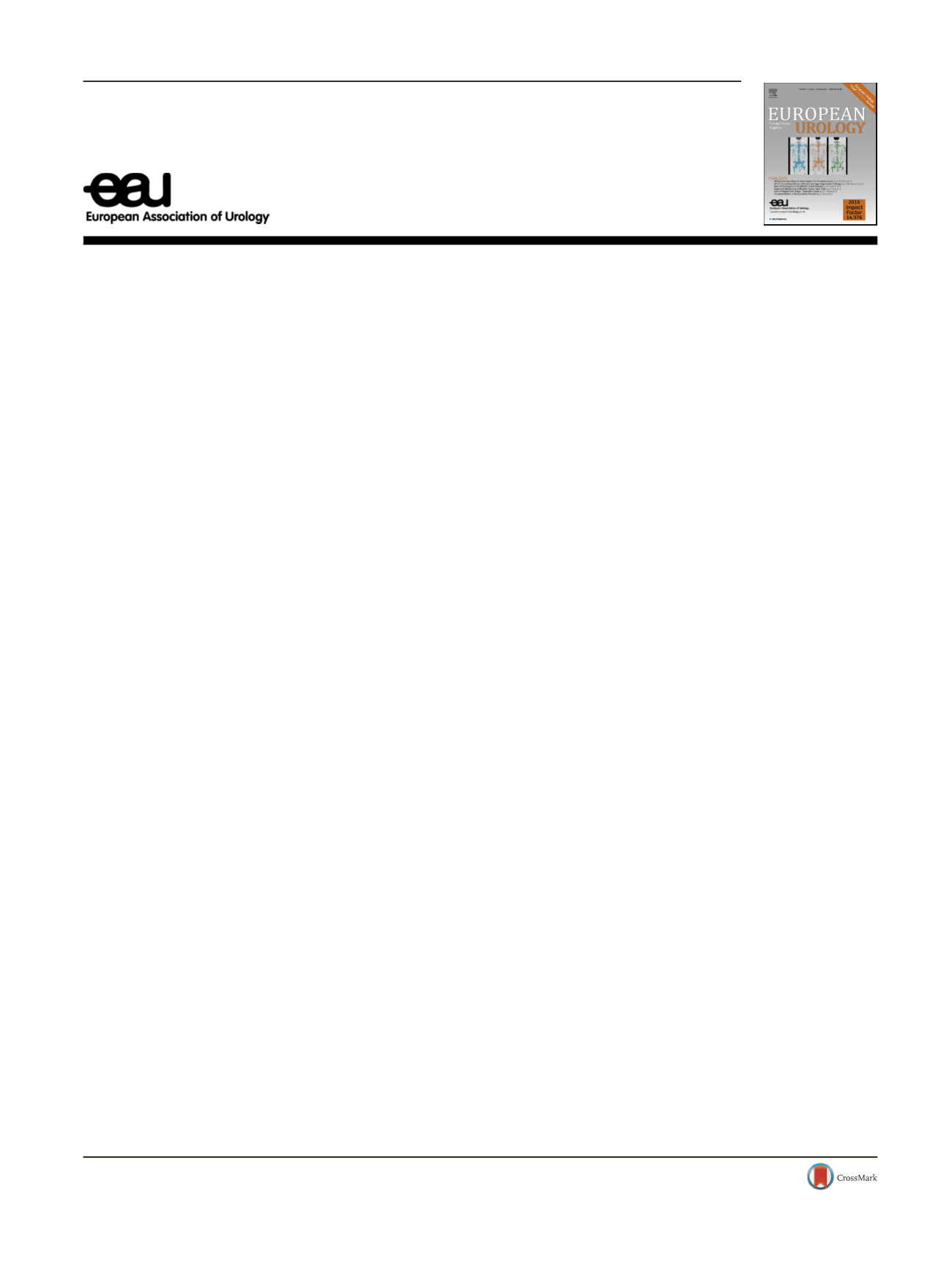

Platinum Priority
–
Editorial
Referring to the article published on pp. 920
–
928 of this issue
Type of Androgen Deprivation Therapy and Risk of
Cardiovascular Disease
Nancy L. Keating
a , b , *a
Department of Health Care Policy, Harvard Medical School, Boston, MA, USA;
b
Division of General Internal Medicine, Brigham and Women's Hospital,
Boston, MA, USA
A number of observational studies have identified an
association between androgen deprivation therapy for the
treatment of prostate cancer and an increased risk of
cardiovascular disease
[1]. Two population-based studies
documented associations of gonadotropin-releasing hor-
mone (GnRH) agonists, but not orchiectomy, with cardio-
vascular disease during androgen deprivation therapy
[2,3], and a recent comparative effectiveness study
suggested that the risk of cardiovascular disease was
higher for men treated with GnRH agonist therapy than for
those treated with orchiectomy
[4]. These observational
studies suggest that the type of androgen deprivation
therapy could be important, but
[2_TD$DIFF]
they are limited by the
relatively infrequent use of orchiectomy in the USA and
Denmark, and by the notable differences in patients who
are treated with GnRH agonist therapy versus orchiectomy.
Use of orchiectomy has typically been more frequent
among menwho are older, havemore comorbid illness, live
in areas of lower socioeconomic status, were treated less
recently, and have higher-risk tumors. Prior studies have
adjusted for observed differences in these populations
using standard regression or propensity score methods;
however, these methods do not account for unobserved
differences. Moreover, the differences in patient and tumor
characteristics suggest that men treated with orchiectomy
have a higher risk of death from a variety of causes, which
could limit ascertainment of cardiovascular events. Al-
though prior studies have used competing risk analyses to
address this, such analyses may be sensitive to the
relationship of covariates with the primary outcomes
and the competing risks
[5].
In this month's issue of
European Urology
, Thomsen and
colleagues
[6]report the results of a study designed to
address some of the limitations of these observational
studies comparing the risk of cardiovascular disease
associated with GnRH agonist therapy versus orchiectomy.
Using a semiecologic design, the authors measured the
exposure (receipt of orchiectomy vs GnRH agonist) at an
ecologic level, leveraging substantial differences across
providers in Sweden in use of orchiectomy to treat prostate
cancer during the 1990s, and measured the outcome at the
individual patient level. With data on all prostate cancers
diagnosed in Sweden during 1992
–
1999, the authors
specified 580 experimental
“
units
”
defined by healthcare
provider, diagnostic time period, and patient age at
diagnosis in which rates of orchiectomy varied from 14%
to 96%. For each man, the authors identified the first
occurrence of a cardiovascular diagnosis starting at 3 mo
after diagnosis (the date on which men were presumed to
initiate androgen deprivation based on timing of initiation
for men diagnosed in 2006
–
2012, of whom 90% started
androgen deprivation therapy within 3 mo of diagnosis).
Cardiovascular disease diagnoses of interest included new
diagnoses of hypertension, ischemic heart disease, stroke,
deep venous thrombosis or pulmonary embolism, and
arterial embolism.
Men treated with orchiectomy were older, had higher-
risk tumors (including more metastatic disease), and had
lower levels of education, factors that would likely increase
the risk of cardiovascular disease as well as the risk of
[3_TD$DIFF]
death
from prostate cancer and other
[4_TD$DIFF]
causes. These differences
were
[5_TD$DIFF]
lessened when comparing patients grouped based on
E U R O P E A N U R O L O GY 7 2 ( 2 0 17 ) 9 2 9 – 9 3 0ava ilable at
www.sciencedirect.comjournal homepage:
www.eu ropeanurology.comDOI of original article:
http://dx.doi.org/10.1016/j.eururo.2017.06.036.
* Department of Health Care Policy, Harvard Medical School, 180 Longwood Avenue, Boston, MA 02115, USA. Tel. +1 617-432-3093;
Fax: +1 617 432 0173.
E-mail address:
keating@hcp.med.harvard.edu.
http://dx.doi.org/10.1016/j.eururo.2017.08.0040302-2838/© 2017 European Association of Urology. Published by Elsevier B.V. All rights reserved.
















